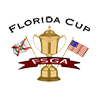Written by: Darin Green, Senior Director of Rules & Competitions
Normally, when a ball is in motion after a stroke, no one should move anything that might affect the ball, or place anything down that might affect the ball in motion. However, there are exceptions. When a ball is in motion, people may move themselves, any equipment of any player, and a removed flagstick. If a player removes something else, or places something down, to attempt to effect a ball in motion, the player earns the general penalty (loss of hole in match or two strokes in stroke play). The penalty applies even if the ball in motion is not effected by the placement or removal of the object. (We call this an “intent based rule” rather than “outcome based rule”)
An example of this rule breach is when a player chips a ball up a hill and notices the ball rolling back towards the area the player just played from. While the ball is rolling back towards the player, the player steps on a divot hole to flatten it and flicks away some loose grass (loose impediments). The act of stepping on divot hole and flicking away the loose impediments is a breach of Rule 11.3 and the player receives one general penalty (loss of hole in match play or two strokes in stroke play).
When a ball is in motion, you must not purposely deflect or stop the ball. If a ball is motion and a person purposely stops or deflects a ball in motion, the person that did the stoppage or deflection receives the general penalty. If the person was acting on instructions by the player that made the stroke, then the penalty would apply to the player that made the instruction. For instance, if a player hits a chip shot too hard and the ball is rolling towards the water and the player says “stop that ball” and another player stops it from rolling into the water, the player that played the stroke would receive the general penalty.
The next question you might be wondering is what does the player do if their ball in motion was stopped or deflected by someone. If a ball in motion is stopped or deflected by someone, the player must estimate the point where the ball would have come to rest and drop a ball within one club-length no nearer the hole than that spot. If the stroke was made from the putting green, then the player must cancel the stroke and replay it.
At a junior tournament recently, a group of players were walking across a road from a putting green towards the next hole. A player in the group behind them made a stroke and the ball was rolling towards the group that was walking to the next hole and a spectator mistakenly thought the ball fell out of one the kids bag, so he stopped the ball and picked it up. He then became aware that the ball was actually a ball in motion from the group behind them. A rules official was called and asked the spectator, and others, where the ball was likely going to come to rest. Everyone agreed that the ball would have rolled on to the street and be out of bounds. Since the ball would have gone out of bounds, the ball must be treated as out of bounds and the player must return to where he just played from and play under stroke and distance (the stroke counted, add a penalty stroke and drop a ball within one club-length no nearer hole from where he previously played).
To be safe, when a ball is in motion, don’t do anything.
Enjoy this nice weather and play some golf!





